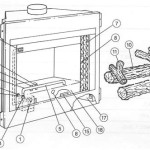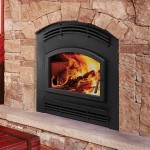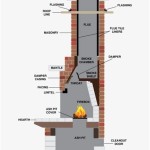Brass Fireplace Fenders: History, Function, and Aesthetic Appeal
Brass fireplace fenders represent a timeless addition to hearths, blending historical significance with practical functionality and aesthetic elegance. These decorative barriers, positioned in front of the fireplace, serve not only as safeguards against stray embers but also contribute to the overall visual appeal of the room. Understanding the history, mechanics, and stylistic variations of brass fireplace fenders provides insight into their enduring popularity and value.
The use of fireplace fenders dates back several centuries, emerging as a necessary feature in homes utilizing open fireplaces for heating and cooking. Initially, these barriers were quite rudimentary, often constructed from simple iron or wood. As homes became more refined and the demand for decorative elements increased, brass emerged as a favored material due to its inherent beauty, durability, and malleability. Brass fenders offered a sophisticated alternative, complementing the ornate fireplace surrounds and decorative interiors of the era.
Brass, an alloy of copper and zinc, possesses several qualities that make it an ideal choice for fireplace fenders. Its resistance to corrosion ensures longevity, even when exposed to the heat and potential moisture near a fireplace. Furthermore, brass is relatively easy to cast and manipulate, allowing artisans to create intricate designs and complex shapes. The warm, golden hue of brass also adds a touch of luxury and sophistication, enhancing the ambiance of any room.
Evolution of Fender Design
The design of brass fireplace fenders has undergone significant evolution throughout history, reflecting changing architectural styles and aesthetic preferences. Early fenders were often simple, utilitarian structures designed primarily for function. These early examples typically featured a plain, rectangular shape with minimal ornamentation. As craftsmanship developed, fenders became more elaborate, incorporating decorative elements such as pierced patterns, cast ornaments, and engraved details.
The Georgian and Victorian eras witnessed a flourishing of fender design. During these periods, fenders often featured intricate fretwork, incorporating classical motifs, floral patterns, and geometric designs. The use of cast brass became more prevalent, allowing for the creation of three-dimensional ornaments and sculptural details. The addition of padded tops also became popular, providing a comfortable seating area for warming feet or resting fireplace tools.
Art Nouveau and Art Deco movements also influenced fender design, albeit to a lesser extent. Art Nouveau fenders embraced flowing, organic forms and stylized floral patterns, while Art Deco fenders favored geometric shapes, streamlined designs, and the use of contrasting materials. These styles offered a more modern and contemporary alternative to the traditional designs that had dominated for centuries.
The size and shape of brass fireplace fenders also varied depending on the size and style of the fireplace. Larger fireplaces required larger fenders to provide adequate protection, while smaller fireplaces could accommodate more delicate and decorative designs. Curved fenders were often used to complement curved fireplace surrounds, while rectangular fenders were more suitable for fireplaces with straight lines.
Functionality and Safety
The primary function of a brass fireplace fender is to provide a safety barrier, preventing embers and sparks from escaping the fireplace and potentially igniting nearby carpets, furniture, or clothing. The fender essentially creates a physical boundary, containing any flying embers within the hearth. This is particularly important in homes with young children or pets, who may not be aware of the dangers posed by an open fire.
A well-designed fender should be high enough and wide enough to effectively contain embers, while also allowing for easy access to the fireplace for tending to the fire. The height of the fender is crucial, as it must be tall enough to prevent embers from jumping over it. The width of the fender should also be sufficient to protect a reasonable area around the fireplace.
Beyond ember containment, a brass fireplace fender also serves to protect the edges of the hearth, preventing damage from dropped logs or fireplace tools. The fender acts as a buffer, absorbing impacts and preventing chipping or cracking of the hearth surface. This is particularly important for hearths made from delicate materials such as marble or tile.
Furthermore, a brass fireplace fender can help to improve the overall efficiency of the fireplace by reflecting heat back into the room. The metallic surface of the brass reflects radiant heat, directing it outwards and helping to warm the surrounding area. This can be particularly beneficial in large rooms or in homes with poor insulation.
Maintenance and Preservation
Maintaining a brass fireplace fender requires regular cleaning and polishing to preserve its appearance and prevent tarnishing. Brass is susceptible to oxidation, which can cause it to develop a dull, dark patina over time. Regular cleaning with a brass cleaner or polish can help to remove this tarnish and restore the original shine.
The frequency of cleaning will depend on the environment in which the fender is located. Fenders located in homes with high humidity or air pollution may require more frequent cleaning than those in drier, cleaner environments. It is also important to avoid using abrasive cleaners or scouring pads, as these can scratch the surface of the brass.
In addition to cleaning, brass fireplace fenders may also require occasional polishing to maintain their luster. Polishing can be done manually using a soft cloth and brass polish, or with the aid of a polishing machine. It is important to follow the manufacturer's instructions when using brass polish, and to avoid applying too much pressure, as this can damage the surface of the brass.
Proper storage is also important for preserving brass fireplace fenders. When not in use, fenders should be stored in a dry, clean place to prevent tarnishing. It is also advisable to wrap the fender in a soft cloth or protective covering to prevent scratches or dents. Avoid storing fenders in damp or humid environments, as this can accelerate the oxidation process.
For antique or valuable brass fireplace fenders, professional restoration may be necessary. Professional restorers have the expertise and tools to safely clean, repair, and polish brass without damaging the original finish or design. They can also repair any structural damage, such as cracks or broken pieces. Consulting with a professional restorer is recommended before attempting any major repairs on an antique fender.
The value of a brass fireplace fender depends on several factors, including its age, design, craftsmanship, and condition. Antique fenders, particularly those made by renowned manufacturers or featuring rare designs, can command high prices. The quality of the brass and the level of detail in the ornamentation also contribute to the value of the fender. Fenders in excellent condition, with minimal signs of wear and tear, are typically more valuable than those that are damaged or tarnished.
Ultimately, the enduring appeal of brass fireplace fenders lies in their ability to combine functionality with aesthetic charm. They continue to serve as essential safety features while also adding a touch of elegance and sophistication to any fireplace setting. Their historical significance and enduring beauty ensure that they will remain a valued addition to homes for generations to come.

Antique Fireplace Fender 42 Vintage Brass Surround Screen Guard Pierced Curved W Paw Feet Victorian English Style De

Beautiful Antique Brass Fireplace Fender 212688 Ingantiques Co

Mirabelle Antiques Charlottesville Va Pierced English Brass Fireplace Fender On Fancy Paw Feet

Brass Fireplace Fender Wells Reclamation

Antique English George Iii Iv Period 19th Century Pierced Brass Fireplace Fender For At 1stdibs

Brass Fireplace Fender P0441 Charles Nijman Antiques

Fender

Traditional Brass 5 Foot Antique Fireplace Fender Olde Good Things

Antique Brass Fireplace Fenders Near Chicago Murco Recycling

Brass Fireplace Fender Wells Reclamation








